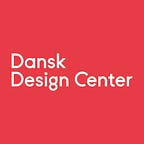The future of the healthcare sector is shaped by people — not technology
The rapid pace of today’s technological development and the growing pressures on healthcare services compel us to focus first on ourselves, on human needs: what sort of healthcare services do we dream of and want?
By Sara Gry Striegler, Programme Director at the Danish Design Centre
Artificial intelligence and other rapidly evolving technologies are generating equal parts wild enthusiasm and profound concern for their impact on everyday life in Danish society, including our working lives and our healthcare services. Will technology revolutionise the healthcare sector and ensure a holistic approach that is shaped around human needs? Or will the technology lead to increasing inequality in our society? Technology is a driver of development and growth, but what kind of development and what sorts of opportunities does it offer?
There is a tendency to focus on technology and try to discover what it might do for us, but the rapid pace of today’s technological development and the growing pressures on healthcare services compel us to focus first on ourselves, on human needs: what sort of healthcare services do we dream of and want? What kind of healthcare experience do we want for citizens in our society — tomorrow and further into the future? And based on that, what are our demands of future technology? It may seem a trivial point to make, but technology must be the means to achieve our vision, not the vision itself. It is in interactions with people that technology becomes valuable to us and can help transform our healthcare services.
The future’ is an intangible and abstract concept, which we need to put in more concrete terms to be able to examine and address it. In order to shape our future wisely, we must ensure that it does not simply extend the mindset and the reality that we are all working on and within today. We need to take our approach to a level where the debate is not confined by today’s agendas, interests, familiar markets and economic restrictions. We need to think as far as ahead as 2050.
The future’ is an intangible and abstract concept, which we need to put in more concrete terms to be able to examine and address it.
Working with something as abstract as the year 2050 requires visual and tangible presentations of future scenarios to make the future pertinent, relevant and meaningful. Such an approach may be found in a set of tools that Denmark has been pioneering for years: design. Many may perceive design as being mainly concerned with aesthetics and form, but design is really a set of tools and an approach with the capacity to concretise, investigate and challenge. Taking a design-based approach means basing our work on social, human, co-creative, interdisciplinary and meaningful qualities; values that are just as much part of Denmark’s DNA as form and aesthetics. Although design as a tool cannot exactly predict future technologies, properly applied it does give us the ability to approach the future wisely and even to shape it.
In ‘Siri-Kommissionen’ [see box below], when we debate digital disruption and the necessary conditions for realising the full potential of phenomena such as artificial intelligence, we base our discussions on a concrete future, including the Danish Design Centre’s framework for developing our future healthcare system: four specific scenarios for healthcare services in 2050. These future scenarios frame our discussions about how we can best prepare the healthcare sector for the future and define the path that lets us trace developments from 2050 back to 2017. Together, we work our way back to the status quo and examine what dilemmas and conditions we need to address now, and what stepping stones, premises and dependencies we will need to address tomorrow, in 2020 and in 2030.
The future of healthcare is here right now — and we have the opportunity to do something much more important than predicting it: creating it.
Sara Gry Striegler is a member of the SIRI commission. This article was originally published on the SIRI commission blog on Berlingske Business (in Danish).
Originally published at danskdesigncenter.dk on January 8, 2018.
